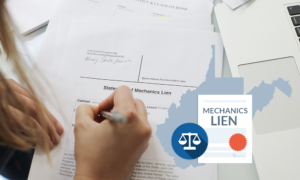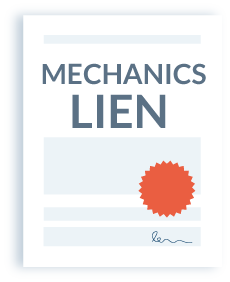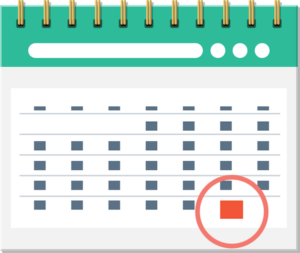
If you’ve gone unpaid while working on a private project in West Virginia, you may want to consider filing a mechanics lien. A mechanics lien is one of the most powerful ways a contractor or supplier can protect themselves from non-payment.
The mechanics lien process is fairly simple, but there are a ton of pitfalls, deadlines, and errors that claimants should be aware of. But, if you’re willing and able to go at it alone, then you’re in the right place. This how-to guide will provide you with everything you need to know in order to file a mechanics lien in the state of West Virginia.
Before you file: Make sure you have lien rights in West Virginia
First, you’ll need to find out if you actually have the right to file a mechanics lien in West Virginia. To do so, you’ll need to answer two simple questions.
Are you covered under the lien statutes?
The West Virginia mechanics lien statutes grant lien rights to a number of different construction project participants. This includes contractors, subcontractors, materialmen, and equipment lessors. In addition to that, mechanics liens are also available to design professionals; such as architects, surveyors, engineers, and landscape architects. The work performed on the property must be authorized by the property owner in order for mechanics lien rights to be available.
However, lien rights are only available to the first 3 tiers under the property owner. The GC – and any others who contract directly with the owner – are the first tier. Subs and suppliers who contract with the GC are in tier 2. Subs and suppliers who contract with tier 2 are in tier 3.
Anyone lower than tier 3 on the payment chain doesn’t have the ability to file a lien.
Does WV have preliminary notice requirements?
There are no requirements in West Virginia for sending preliminary notice. However, even though it’s not required to secure mechanics lien rights, it’s a good idea to send preliminary notice anyway. Preliminary notices, apart from securing lien rights, provide many other useful benefits such as increased visibility, and open communication. They also tend to speed up payment times.
Now that we know who can file a West Virginia mechanics lien, let’s go through each step to get the lien claim recorded.
Step 1. Prepare your West Virginia mechanics lien claim form
A West Virginia mechanics lien form isn’t an overly complicated document. But it’s important that you get the right form and add all of the required information. This is particularly an issue in West Virginia, as there is more or less information required; depending on your role in the project. For the purpose of this article, we’ll list all the potentially required info for any role.
Property owner information
First and foremost, you’ll need to list the property owner’s name and address on the lien claim form. Getting this information can sometimes be challenging, particularly for lower-tiered subs and suppliers. If you don’t have this information in hand, you may want to request it from your hiring party or do some research on your own.
Your information
This one is pretty straightforward. Yet, many lien claimants still find ways to mess up their own information. If filing on behalf of just yourself, provide your full, legal name. If, however, you’re filing on behalf of a company, be sure to include the full company name. Which includes the business designation as well; i.e. LLC or Inc.
Hiring party’s information
Here, you’ll simply need to provide the name and business address of the person or company that contracted with you on the project. You should already have this information right there in the contract documents. Obviously, if you are a 1st-tier sub or the general contractor, this section won’t appear on your form.
General contractor’s information
This section is another simple one. Just input the name and address of the person or construction company that is the acting GC on the job. If you don’t have this information, request it from your hiring party.
Description of labor or materials
This section is where, in the words of the statute, you’ll describe the nature of the contract. This doesn’t have to be a fully itemized list, but not providing enough information is a common reason why mechanics liens are rejected. The clerk may reject it for too little information, but there’s no penalty for providing too much. However, if you are a laborer or material supplier, a full itemized list is required along with pricing or wage rates.
Description of the property
West Virginia mechanics liens do not require a full, legal property description. The statute does provide a section to input the map, lot, and block number. However, it then goes on to state that you can alternatively provide some “other definite and ascertainable description of the real estate.” A simple street address may not be sufficient, and again, the more details the better.
Contract price and amount unpaid
What you provide in this section is fairly important. You’re required to not only provide the full contract price but the unpaid amount that forms the basis of the lien claim. If you didn’t have a written contract, then provide a good faith estimate of the value of labor or materials you provided to the project. As for the amount unpaid, don’t include any additional costs such as attorney fees or collection costs. Overstating the unpaid amount could potentially make you liable for filing a fraudulent lien.
Signed and notarized
Lastly, now that the form is completely filled out, it’s time to sign the claim. But don’t forget to wait until you’re in front of a notary public. West Virginia mechanics liens must be notarized in order to be valid. The office will refuse to file it without that stamp!
Step 2. File your West Virginia mechanics lien claim
Now that your mechanics lien form is ready and filled out, it’s time to file your claim. Although this is seemingly simple, there are quite a few things that can go wrong. Some of the more common lien filing mistakes include:
- Incorrect filing fees
- Filing in the wrong office or county
- Failing to take turnaround time and backlog into account and filing late
- Missing the deadline because the initial claim was rejected
Deadline to file
A West Virginia mechanics lien must be filed within 100 days of the claimant’s last date of furnishing labor or materials to the project. This is a hard deadline, so don’t miss it. If you miss the filing deadline, you’ll no longer be able to file your lien. So every time you finish a project, mark your calendar.
Where to file the lien
To properly file your mechanics lien claim, you’ll need to figure out which office to file in. Mechanics liens in West Virginia need to be filed and recorded in the county clerk’s office in the county where the property is located. Each clerk’s office will have its own filing fees and other specific requirements. Be sure to reach out to the office ahead of time and confirm everything you’ll need to file your lien correctly, the first time.
How to record your West Virginia mechanics lien
The time has come to actually record (i.e. deliver) your mechanics lien form. In West Virginia, there are potentially three different options you can choose from to file: In-person, through the mail, or electronically. Each with its own advantages and disadvantages.
In-person filing
Going down to the county clerk’s office is by far the best way to go about filing your lien claim, for two reasons. One, being down there in person means that if there are any errors or problems, you can correct them in real-time. Two, filing in person guarantees that your claim is filed on the same day. If you decide to go down to the office, bring multiple copies of your claim and attachments. It’s also a good idea to bring along more than one blank check in case you miscalculate the filing fees.
Filing by mail
Filing your lien claim by mail, although a relatively common practice, can be a tricky proposition. The reason being is that the amount of time it takes to get to the office and potentially dealing with any backlog the office may have. Also, if they reject your lien, the office will have to send it back back for correction. If you waited until the last minute to file, you may find yourself out of luck! But if mailing is the option you choose, make sure you include a stamped, self-addressed envelope with return instructions. That way you can have a certified copy of the filed lien for your records.
Electronic filing
There are only a limited amount of West Virginia county clerk’s offices that allow for electronic recording. Again, contact the appropriate office to find out if they do. The main benefit of e-recording is, obviously, the convenience. This usually entails signing up with a third-party service and digitally uploading your files. The only real downside to this is making sure that the uploads are formatted correctly and are legible.
Step 3. Send a Notice of Lien Filing
This step is only required by subcontractors and other lien claimants that didn’t contract directly with the property owner. If that’s you, then you’ll need to send a “notice of mechanics lien” within the same 100-day deadline as the lien filing deadline. Also, this notice should be served personally, or by first-class or certified mail, with return receipt requested for your records.
However, if the owner doesn’t live within the state or cannot “be found,” then service can be accomplished by publishing a Class II legal advertisement within the county and posting a copy in a conspicuous place on the property being liened.
The statute doesn’t specify if this needs to be sent before or after filing, just as long as it’s done within the deadline. Best practice? You should go ahead and send notice the same day the lien was filed. Even if you aren’t required to do so, it’s a good idea to send notice anyway. The sooner the owner is made aware, the more likely you are to be paid.
What to do after filing a West Virginia mechanics lien
If you’ve followed all these steps, then congratulations! Your West Virginia mechanics lien is filed, and ready to work to get you paid. But just because the lien is filed, doesn’t mean that you’re done. Mechanics liens don’t last forever, and you’ll need to take some sort of action before it expires.
A West Virginia mechanics lien is only effective for 6 months after the claim is recorded. Once this 6-month time frame passes, the lien will no longer be valid or enforceable.
Option 1: Enforcement (foreclosure) action
A lien enforcement action is a full lawsuit, and WV doesn’t award attorney’s fees and court costs to the prevailing party. So, depending on the amount of your claim, you may want to ask yourself if lien foreclosure is worth it. If it is, be sure to contact a local construction attorney for some legal advice on how to navigate this process.
If you’re not quite ready to go to court, there is one more thing you can try. You can send a Notice of Intent to Foreclose, as a final warning shot. This doesn’t need to be anything specific, just a simple letter stating that if you aren’t paid within x amount of days, you are ready to enforce your rights through a lawsuit. This notice is typically enough to get you paid.
Option 2: Release (cancel) the mechanics lien
The alternative option is to release or cancel the lien. Meaning, you were either paid, or you failed to enforce your claim within the 6-month deadline. In any regard, once the debt secured by the mechanics lien is satisfied, or no longer enforceable, you (as the lienholder) are required to submit a release of lien in the same office where the lien was filed. If not, the owner can request that the clerk of the county court discharge it at the lienholder’s expense.
West Virginia construction lien law & payment resources
- Overview of mechanics liens in West Virginia – Guide & FAQs
- Even more West Virginia construction payment resources
- Full WV mechanics lien law: West Virginia Code §38-2-1 et. seq.



